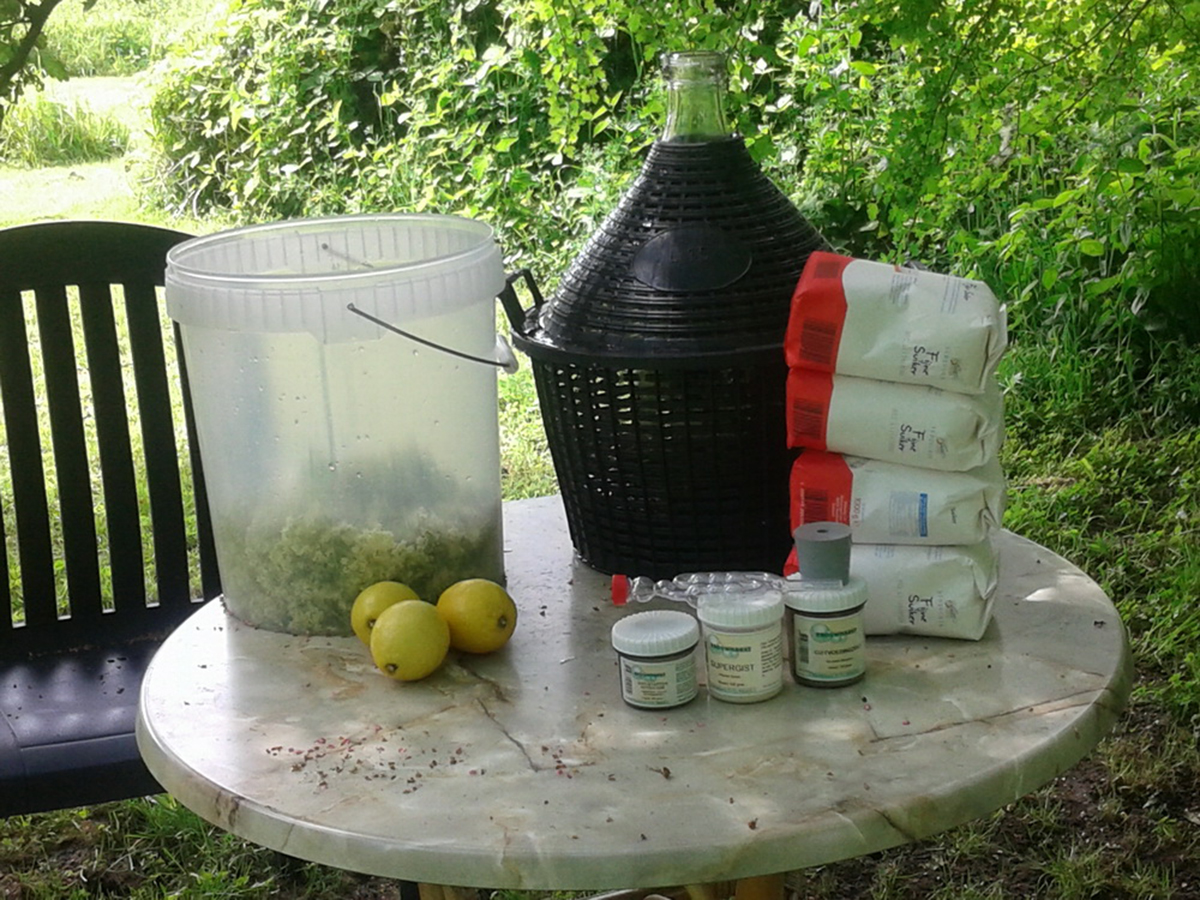Table of Contents
2. Pick Your Flowers
Pick six cups of elder flowers. That's just the flowers. No leaves or anything — you are supposed to take as much green as possible off. Don't wash the flowers because the pollen contained in them are a large part of the process. Your wine won't be as tasty if you wash the flowers first. However, do inspect your loot for bugs and shake any you see off. You can also leave the flowers in a bucket for a few hours and wait for creepy crawlies to crawl out.

It will take you about an hour.
You can take a walking stick or hook to get long branches to bend down.
3. Get Brewing
Place the flowers, lemon juice and rind in the fermentation bucket. Cover this with a few liters of boiling water and let it stand for two days. Cover it with a tea towel. Then, you strain the mixture and rinse the bucket. Put the mixture back in, and boil your sugar in four to five liters of water until it is fully dissolved. Then, you pour that into the fermentation bucket with your wine mixture, and also add your three teaspoons of yeast nutrient.
In the meantime, you get your yeast started. First off, you pour some boiling water onto a few spoons full of sugar, which you have put in a cleaned old jam jar, with a lid. You wait until that is lukewarm, and then you add a touch of lemon juice. Then you put your three teaspoons of yeast in there. You put the lid on and shake it vigorously. Let it stand at a warm spot.
Then you wait until the mixture in the bucket is lukewarm, which will take approximately four hours. After, you add the yeast and cover everything with a cloth again. Your mixture will start throthing. When the chemical reaction calms down a bit after four to 10 days — depending on the temperature — you transfer everything to the demijohn.
4. Transfer, Baby!
You are now starting the second stage of your fermentation process — no oxygen allowed! First, you have to transfer your wine mixture from the fermentation bucket to the demijohn that you already purchased. You do this with the help of a siphoning tube. Simply pouring your mixture from one vessel to another would disturb it too much. You're looking to leave some of the sediment on the bottom.
Once the mixture is in the demijohn, you fit your cork and then the airlock. You need to put some sterilized water in the airlock and place a bit of cotton wool into the top of the airlock. Then you're done and you'll leave your mixture to ferment. When you get a really bad build-up of sediment, you "rack" your wine. That means you siphon it off into another vessel, like second demijohn, and try to take as little of the sediment as possible with you. This ensures your wine will have a better taste and texture.
To bottle your homemade elderflower wine, first ensure bottles are clean and sanitized. Sanitize all equipment like the siphon, tubing, and bottle filler. Prepare your wine by checking clarity and taste. Siphon the wine from your fermentation vessel into bottles, leaving about 1 inch of space at the top for expansion. Immediately cap or cork each bottle to prevent air from entering. Label with bottling date and relevant information. Carefully handle wine and equipment to prevent contamination throughout the process.
See Also: A Few Sips Of Wine A Week During Pregnancy Doesn't Harm Baby In Long Run, Researchers Say
The fermentation process takes approximately three months. You'll know it's ready when all activity in the airlock has ceased. After that, you can bottle your wine. Leave it in the smaller bottles for at least another three months, and enjoy! You'll be so proud of your very first home-made wine. It will be a great present to give to others, but also fantastic to drink yourself!
- Photo by steadyhealth.com
- Photo by steadyhealth.com

